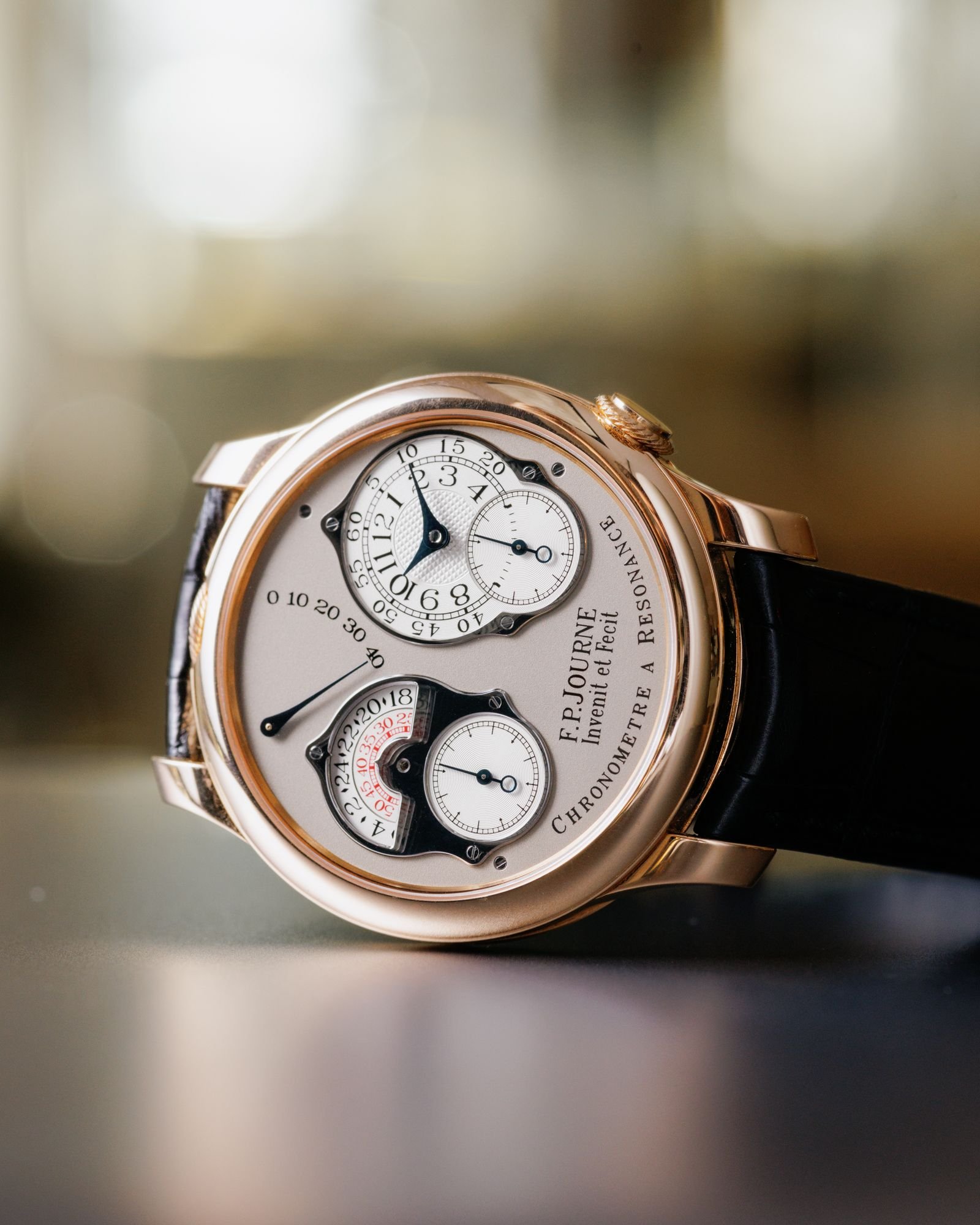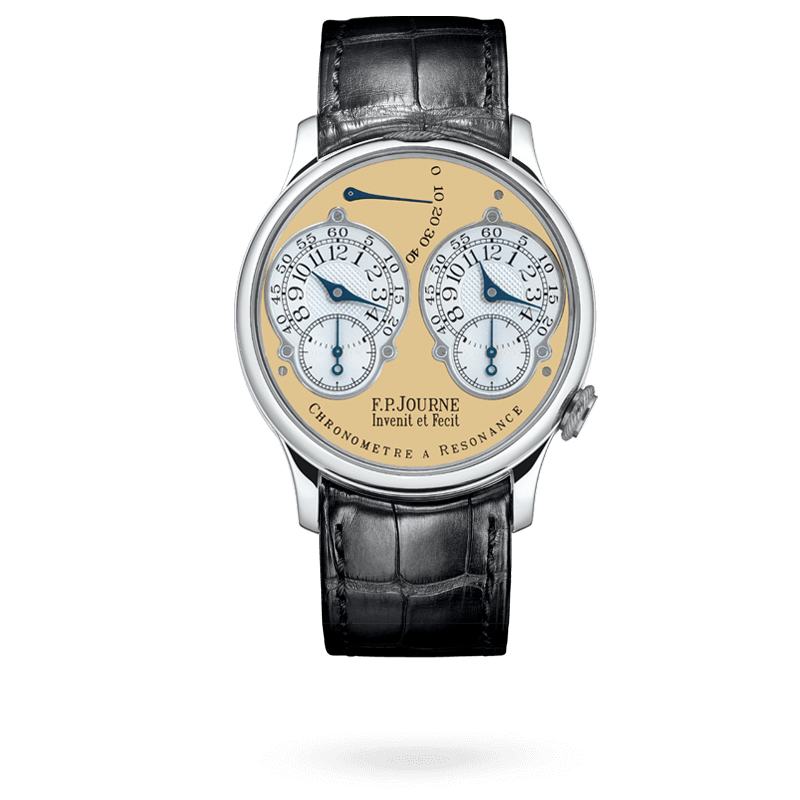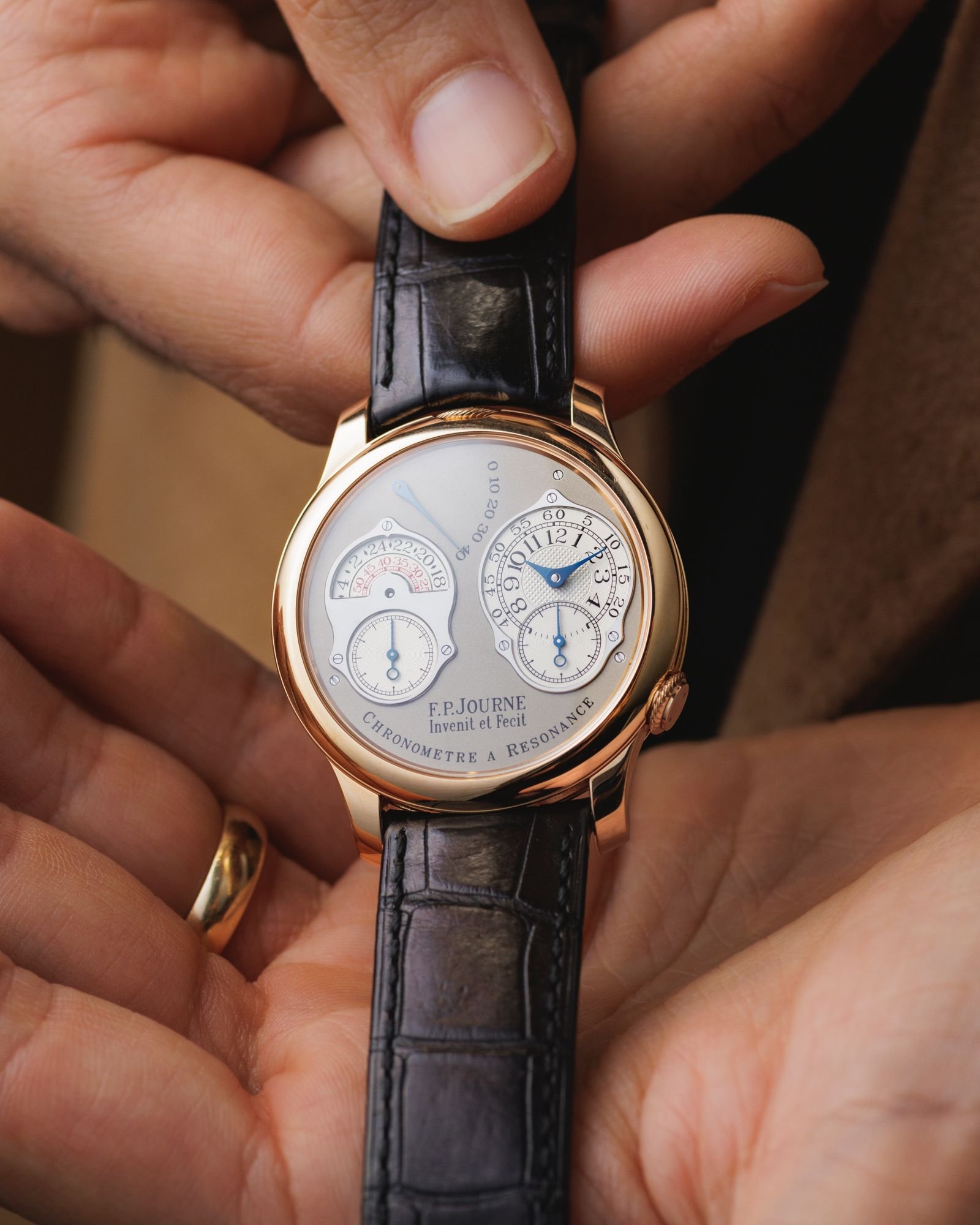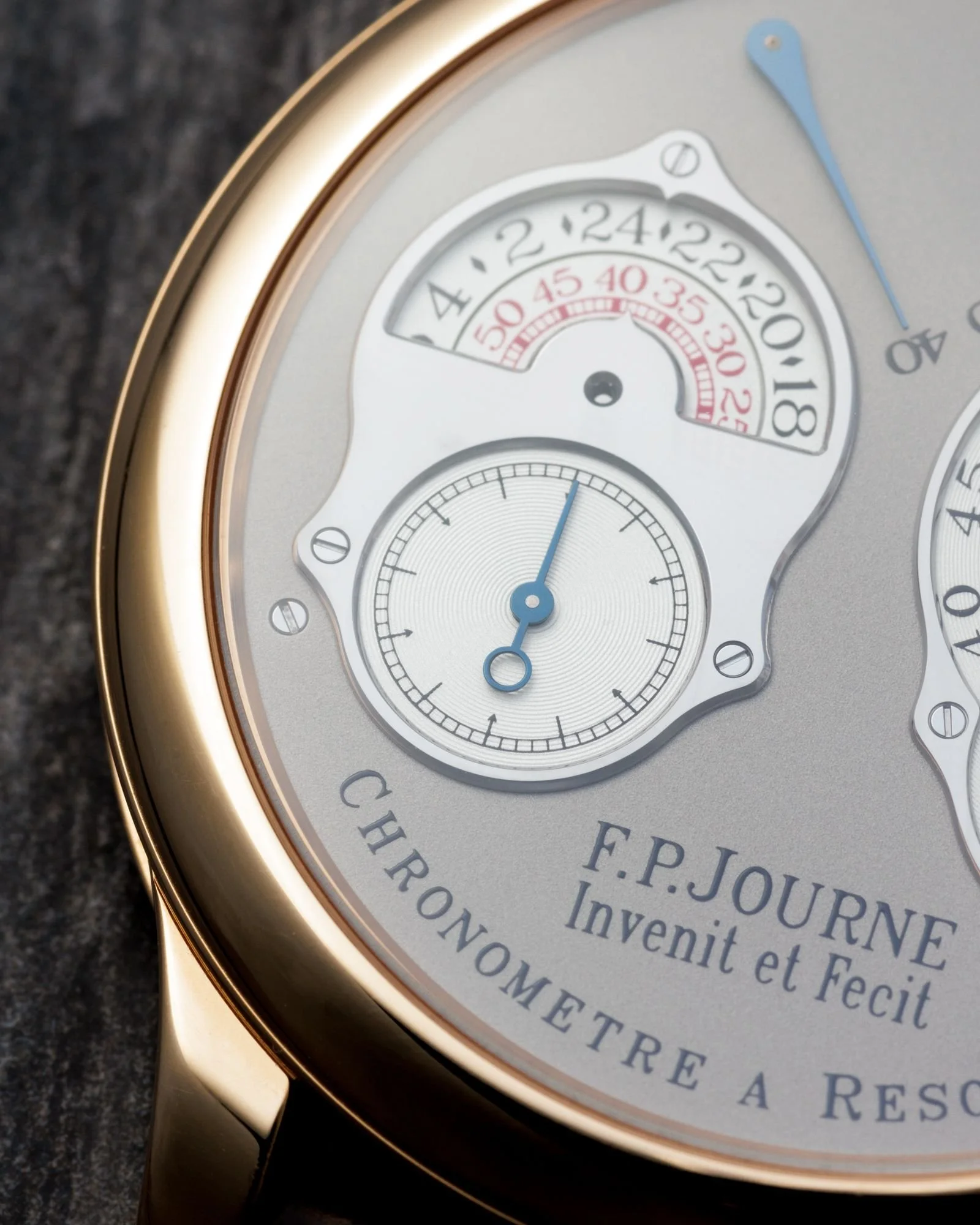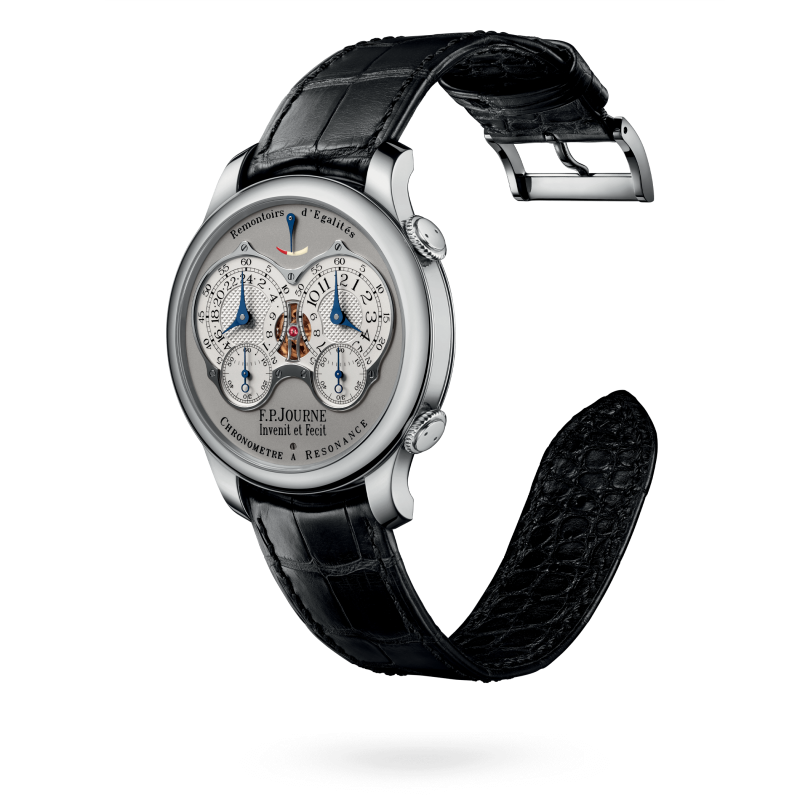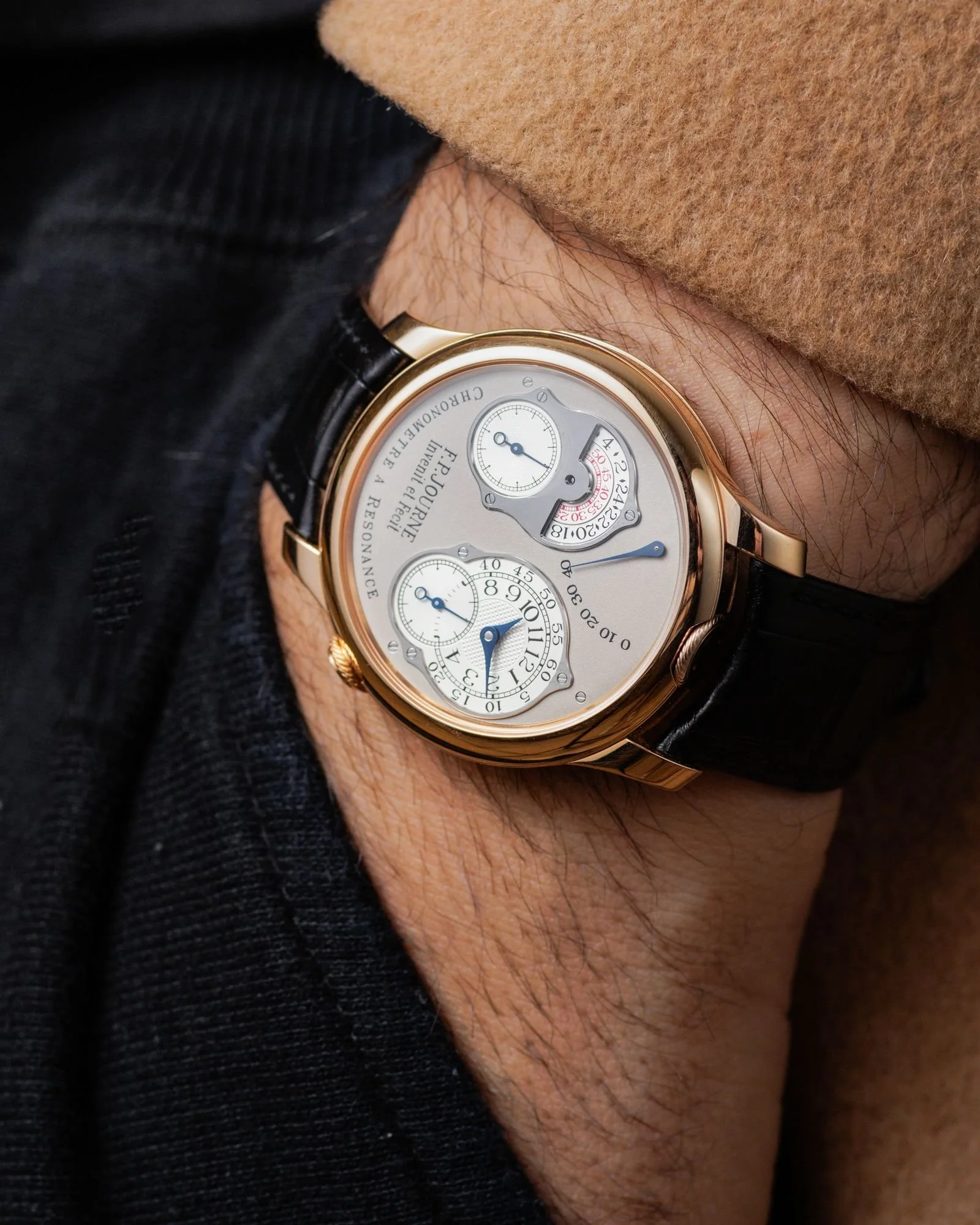The Icons - F.P. Journe's Chronomètre à Résonance
Continuing our series on iconic watches in modern independent watchmaking, we’d be remiss in our duties to overlook F.P. Journe’s Chronomètre à Résonance. While some of the master watchmaker’s more recent timepieces have gained popular attention (the Chronomètre Bleu, Chronomètre Souverain), the Chronomètre à Résonance alongside the Tourbillon Souverain are the watches that elevated François-Paul Journe to one of the greatest watchmakers in the history of horology. A living legend in the craft, we’re diving into the aspects that define the Chronomètre à Résonance as an icon.
The Icon - Unpacking F.P. Journe’s Chronomètre à Résonance
It is very fitting that the Chronomètre à Résonance was first showcased at Baselworld 1999. That was a year of big swings across all cultural domains. The year saw the first Star Wars movie since 1983, the first episode of Spongebob, The Matrix, Fight Club, Dr. Dre’s second album, 2001, drops after an eight-year hiatus, Napster launches and completely changes everyone’s understanding of what can be done on the internet. Maybe there was something about the closing of the millennium – almost like a subconscious impulse to add something to the history books before the page turns. One way or the other, the Chronomètre à Résonance was certainly one final major note to cap the history of watchmaking as a whole in the second millennium CE.
Though 18th century legends (Antide Janvier and Abraham-Louis Breguet) experimented with resonance in clocks, the Chronomètre à Résonance was the first to miniaturize the mechanics to fit a wristwatch. Originally housed in a 38mm case, the movement captures the benefits of resonance by placing two unregulated balances side by side in very close proximity. The principle is that the inertia of each balance’s oscillation resonates through their shared mainplate, effectively trapping the separate balances to operate in synchronization. All versions of the Chronomètre à Résonance except the most recent use separate barrels to power independent gear trains. Two independent movements, this level of precision is something that the likes of Janvier and Breguet would have dreamt of.
Since its initial showcase at Baselworld 1999, the Chronomètre à Résonance has evolved significantly, as has the entire F.P. Journe brand. Later series have included asymmetric dials with a 24-hour time scale as well as the popular “Parking Meter” models, case sizes have moved from 38mm to 40mm and 42mm, and calibers shifted from rhodium-plated brass to 18k rose gold (one of Journe’s signatures). The latest 20th anniversary edition, now the fifth generation of the Résonance, presented an entirely reworked caliber with single mainspring barrel, a differential to split the power between gear trains, and a 1-second remontoir d’égalite to ensure the mainspring’s power is distributed evenly throughout.
Credit: Phillips Artist: F.P. Journe
It’s worth mentioning that another legend in modern independent watchmaking was tinkering with dual balances around the same time as Journe in the mid- to late-1990’s – Philippe Dufour with the Duality. That magnificent timepiece is often confused as a resonance watch. Rather than leveraging the phenomenon of resonance to drive horological performance, the Duality averages both balances with a differential to minimize runaway timekeeping errors. One of the key differences between the Duality and the Chronomètre à Résonance is that Dufour’s timepiece has a single gear train.
What makes the Chronomètre à Résonance iconic
It’s obvious that the technical ingenuity of the Chronomètre à Résonance plays a major role in defining this timepiece as a modern icon. It’s too cut and dry to leave it at that though. By saying it’s simply “horological innovation,” we leave out an important bit of context: this goes against the grain of an increasingly dominant “refinement culture.”
Technology lawyer and online writer, Paul Skallas, coined the term refinement culture to describe a "general streamlining and removal of any unique characteristics … [it is] one dimensional and removes variety from the environment.” The writer points out that this can be observed across automotive (the dominance of the hybrid SUV), sports (the end of mid-range shots in the NBA, power baseline tennis), the increasing disappearance of regional accents, the “Instagramification” of restaurants, and the list goes on and on. Max Büsser commented on refinement culture when he posted on Instagram about the flatness of contemporary luxury brand logos. The overarching idea is that everything is optimized to exacting utilitarian standards – products fit the functional and aesthetic expectations of the masses. Those critical of the refinement culture, well we’re not the target audience.
By no means is fine watchmaking exempt from this broad cultural trend. We’ve all collectively experienced a flatness in innovation and aesthetics with the ubiquitous use of tried-and-true complications as well as a strong push toward steel, bracelets, sports watches, blue dials, then green dials. As soon as a trend becomes even remotely popular, then it’s everywhere. Due to relatively slow development and production timelines in watchmaking, then it’s everywhere for years.
We won’t be bogged down by the debate over the advantages and disadvantages of refinement culture. The value of talking about this trend is here: it’s exactly with this backdrop that the Chronomètre à Résonance stands out as an icon. Even after 24 years, it still feels as different, as extraordinary as it did when it first appeared. It doesn’t feel optimized to fit some dominant trend, then or now. It’s simply a big swing, in terms of the technical innovation, that doesn’t conform to notions of what was or is possible in modern watchmaking. Even if the Chronomètre à Résonance were released for the first time today, our sense is that it would stand out now as much as it did in 1999.
This is one of the major focal points for this category – icons in independent watchmaking – that no icon finds its origins in the dominant technical or aesthetic norms at the time of its release. It always begins with a big swing and whether that connects, well that’s only known after the fact.

